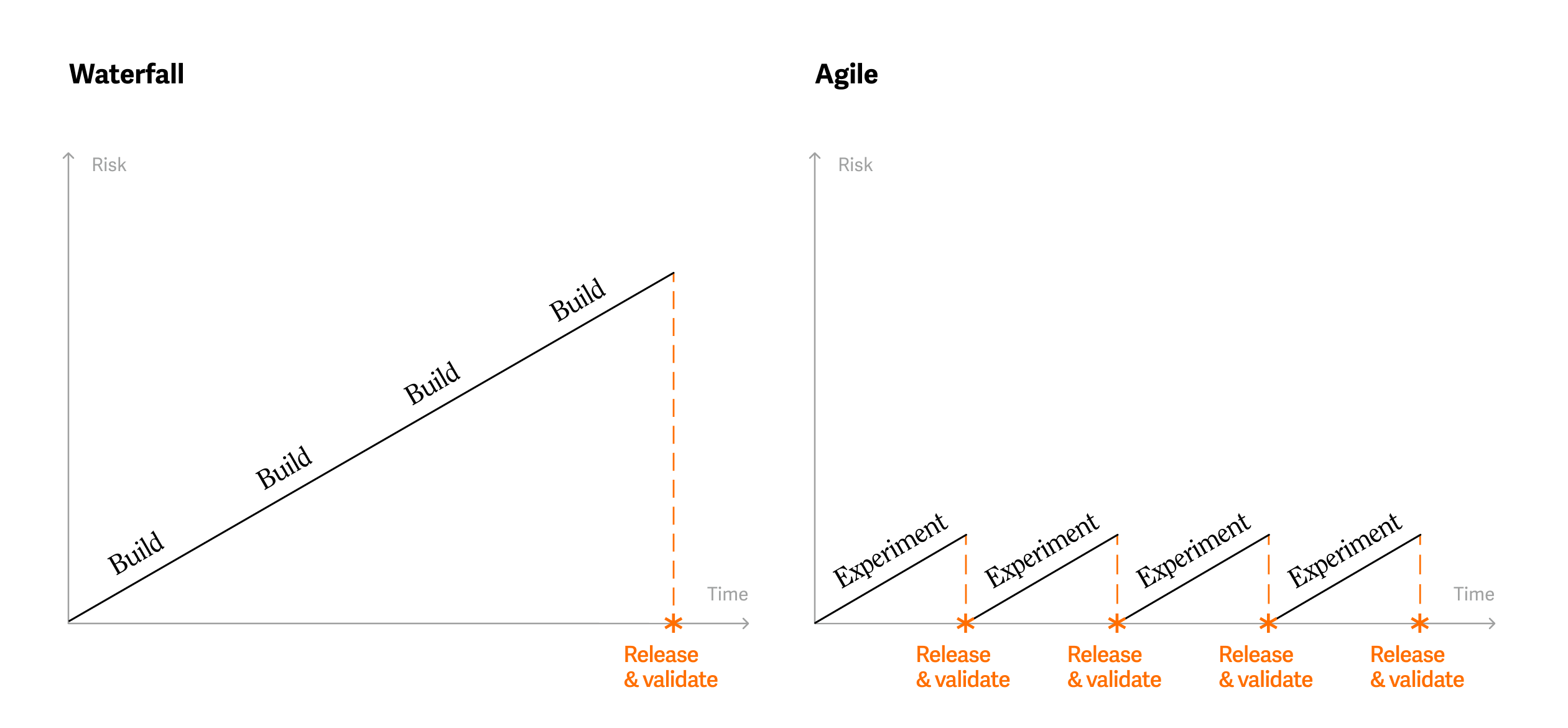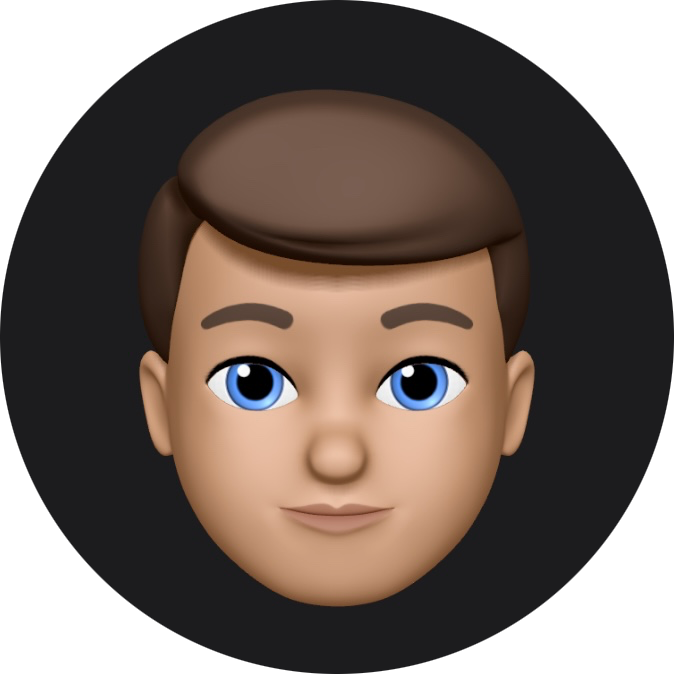Inquisitive mind? Subscribe to our LB* Insights newsletter. No fluff, just stories to make you think.
The faster you experiment, the faster you learn, the faster you’re likely to succeed. That means abandoning the popular waterfall approach. Why?
Imagine a manager at a fictional company. He approves a strict budget for a new product, the design team then creates the experience, later the developers take over and release a perfectly usable product. Everyone is happy and success is achieved.
Sounds like a dream? It is. Reality is, in most cases, poles apart. This is because with waterfall approach, you’re not reducing the uncertainty whatsoever. But there is a way.
Fit between what a company offers and what a customer wants is the number one requirement of a successful value proposition. - Strategyzer
More and more companies nowadays are starting to work with an agile approach. And even though the word "agile" has become a buzzword over the years, this approach has many advantages. Let’s illustrate this methodology in the same made up story.
In this case, the manager starts with exploring a challenge, whether it is a usability issue or a business performance.
If the research team does find the problem worth solving (sometimes there might not even be a problem to begin with), the creation phase begins. And once hypotheses are validated, the budget can be progressively increased.
Designers start concepting, developers start coding and copywriters start writing. They do this in sprints and share their progress (and issues) throughout the whole project. This way, designers don’t design something that can’t be coded and vice versa. Releasing happens more often and so does validating.

When to validate?
Before spending weeks or months building a first version of your product or feature, validate the core (or riskiest) ideas with a few experiments. We dive deeper into the importance of validation and the whole process in our Validation Handbook.
Here are 4 main stages in which you should validate. It is a good practice to identify which stage you’re in so that you can pick adequate experiments to validate with. The stages are:
1. Problem validation
Here you test whether the problem you came up with is worth solving. Is there a room for your idea or is the market quite saturated already? In this stage, you can use desk research or picnic on the graveyard method.
2. Solution validation
Here you will validate your solution to the problem. Is your solution ideal? Can it make money? You can leverage experiments like solution interviews or comprehension tests.
3. Building the minimum solution
A focus on releasing a minimum solution means that you can potentially avoid lengthy and possibly unnecessary work. In this stage, techniques such as fake door or A/B testing are helpful.
4. Continous build & measure
Your product is never finished. Constant iteration is necessary to make sure you stay competitive. Usability testing and product-market fit survey are just some of the methods you can use.
You can find a list of 30 experimenting methods like these in our Experiment Toolbox guide.
Holy grail of validation
Companies that are at the forefront of agile development use a dual-track agile approach.
Dual-track agile allows both discovery and delivery to happen simultaneously. This approach doesn’t require the Discovery team to fully define all features before the Delivery team starts building. The entire process is collaborative and involves teams’ key members (designer, developer, product owner).
Getting out
Building a product that customers want requires you to switch from planning to experimenting. Anybody involved in developing your product needs to get out of the building to directly experiment with your customers. Only once you have proven your riskiest assumption true, you should start working on delivery.
Transformation from waterfall to agile approach is a big challenge that can take years. Therefore don’t be discouraged and persist. In the end, your company will become more efficient time and money-wise and you will get a deeper understanding of your customer.


